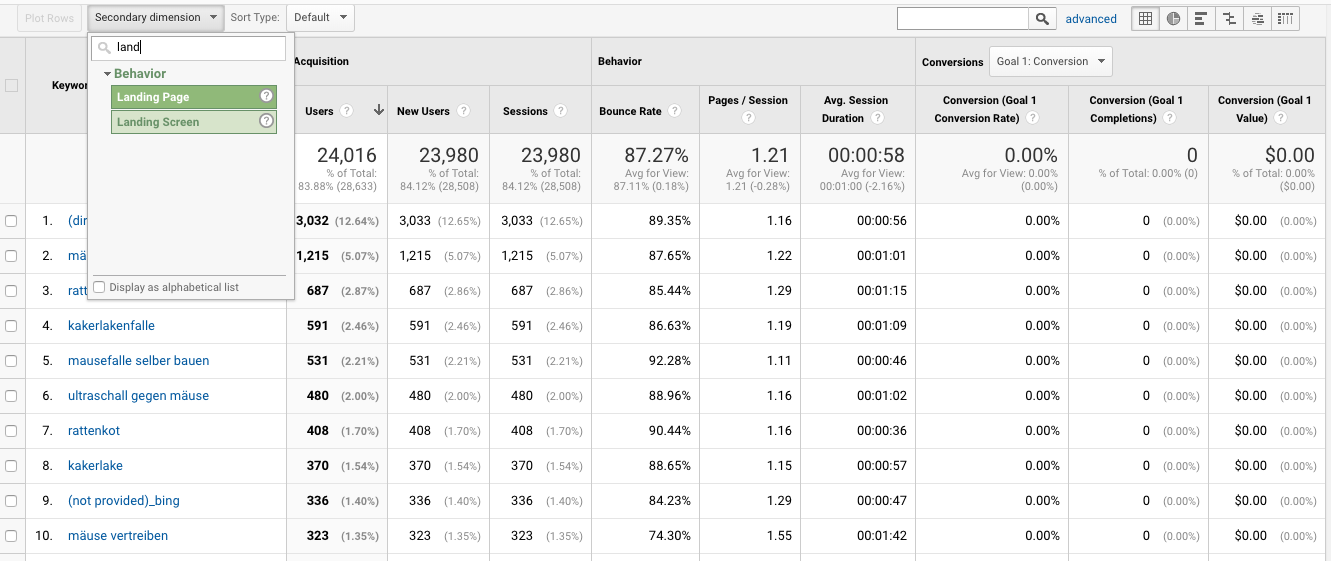Discovering Google Analytics Secondary Dimension: Strategies and Advantages
Discovering Google Analytics Secondary Dimension: Strategies and Advantages
Blog Article
Unlocking the Power of Additional Dimension Analytics for Improved Information Insights and Decision-Making
In the realm of data analytics, primary measurements typically take the limelight, however the true depth of insights exists within the world of additional dimensions. By using the power of secondary measurement analytics, companies can reveal covert trends, reveal relationships, and essence much more significant final thoughts from their data.
Importance of Second Measurements
Checking out the significance of second measurements in analytics unveils the surprise layers of data understandings vital for notified decision-making in various domain names. Secondary measurements supply a deeper understanding of key data by supplying added context and point of views. By incorporating second dimensions right into analytics, organizations can remove much more detailed and nuanced understandings from their datasets.
One secret relevance of additional measurements is their capability to sector and categorize main information, enabling an extra comprehensive evaluation of certain subsets within a dataset. When looking at the data as a whole, this division enables services to identify patterns, patterns, and outliers that could not be apparent. Additional measurements aid in uncovering connections and reliances in between various variables, leading to more accurate forecasting and predictive modeling - secondary dimension.
Moreover, second measurements play an essential function in improving information visualization and coverage. By including second measurements to visualizations, such as charts or graphs, experts can create extra insightful and useful representations of data, assisting in much better communication of findings to stakeholders. Generally, the assimilation of second measurements in analytics is crucial in opening the complete capacity of data and driving evidence-based decision-making.
Secret Benefits of Utilizing Secondary Measurements
Making use of second measurements in analytics uses companies a tactical advantage by augmenting the depth and granularity of information insights. One crucial benefit of including second measurements is the ability to section and filter data, permitting a more detailed evaluation of certain elements within a dataset. This segmentation makes it possible for companies to acquire a more nuanced understanding of their target market, efficiency metrics, and other essential data factors. By dissecting information utilizing secondary measurements such as time, place, device kind, or user demographics, companies can discover patterns, trends, and relationships that may or else stay covert.
Furthermore, the utilization of secondary dimensions improves the context in which main information is analyzed. By leveraging second dimensions in analytics, organizations can harness the complete possibility of their information to drive far better decision-making and achieve their business objectives.
Advanced Data Analysis Techniques
A deep study sophisticated data analysis strategies discloses innovative approaches for removing beneficial understandings from intricate datasets. One such strategy is equipment understanding, where formulas are used to recognize patterns within information, forecast results, and make data-driven decisions. This method enables the automation of analytical version structure, making it possible for the handling of big volumes of data at a faster rate than typical approaches.
One more sophisticated technique is anticipating analytics, which utilizes statistical algorithms and artificial intelligence strategies to forecast future outcomes based upon historic data. By analyzing patterns and patterns, services can expect customer actions, market patterns, and potential threats, equipping them to make check it out proactive choices.
Moreover, text mining and view analysis are valuable strategies for drawing out insights from disorganized data resources such as social networks remarks, customer evaluations, and study feedbacks. By examining message data, companies can recognize customer viewpoints, identify emerging patterns, and boost their services or products based upon comments.
Enhancing Decision-Making Via Secondary Measurements

Enhancing decision-making with additional dimensions makes it possible for businesses to make more notified and targeted critical choices. By segmenting client data based on secondary measurements like acquiring history or interaction degrees, firms can tailor their marketing techniques to specific target market sections, leading to enhanced conversion rates and client complete satisfaction. Additionally, additional dimensions can aid recognize connections and partnerships between various variables, making it possible for organizations to make data-driven choices that drive growth and earnings.
Applying Additional Measurement Analytics
When including secondary dimensions in analytics, companies can open much deeper understandings that drive calculated decision-making and improve general efficiency. Carrying out additional dimension analytics calls for an organized strategy to make certain effective utilization of this powerful tool. The very first step is to determine the essential metrics and dimensions that straighten with the organization's strategic objectives. This entails understanding the details questions the company seeks to address and the data factors called for to resolve them.

Additionally, organizations must take advantage of progressed analytics devices and technologies to enhance the procedure of including second dimensions. These tools can automate data handling, analysis, and visualization, allowing organizations to concentrate on analyzing insights instead of hand-operated data adjustment.
Final Thought
In conclusion, secondary dimension analytics play an essential duty in boosting information understandings and decision-making processes. By using sophisticated data analysis techniques and implementing second measurements effectively, companies can open the power of their information to drive critical company choices.
In the world of information analytics, primary measurements usually take the limelight, yet the real depth of insights lies within the world of second measurements.Utilizing secondary dimensions in analytics offers visit our website organizations a strategic advantage by boosting the deepness and granularity of information insights. By leveraging secondary dimensions in analytics, companies can harness the complete capacity of their data to drive much better decision-making and accomplish their organization purposes.
Implementing information recognition processes and routine audits can assist keep data high quality and dependability.
By making use see here of sophisticated data evaluation techniques and carrying out secondary measurements efficiently, companies can unlock the power of their information to drive strategic service decisions.
Report this page